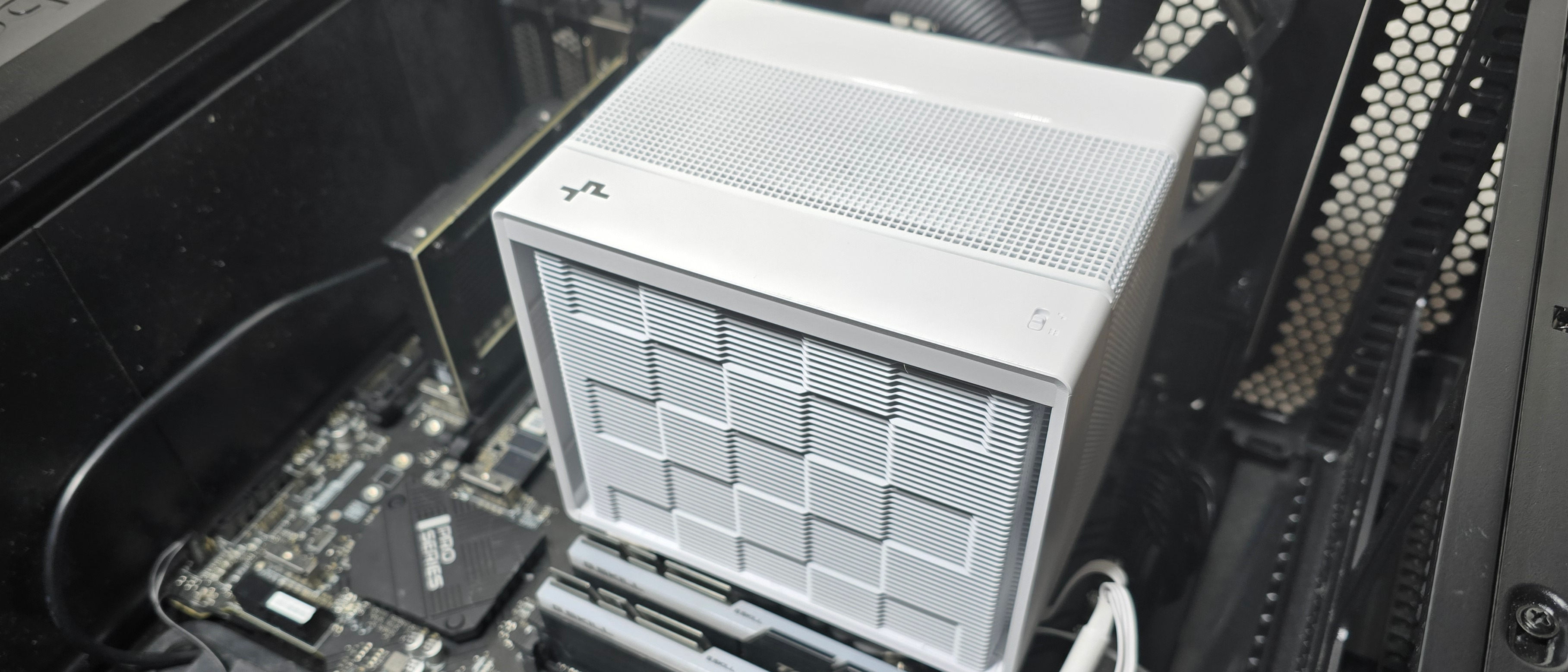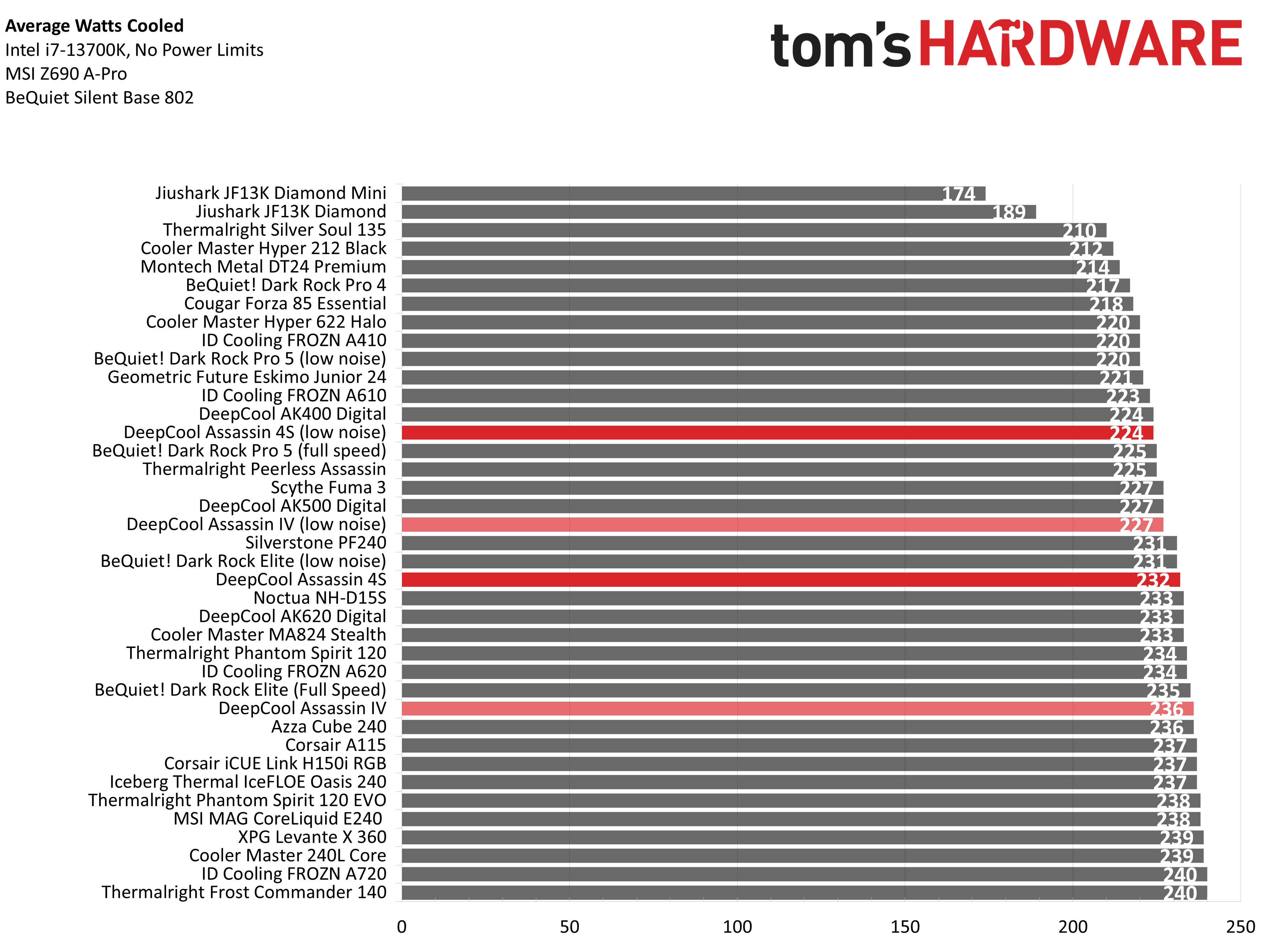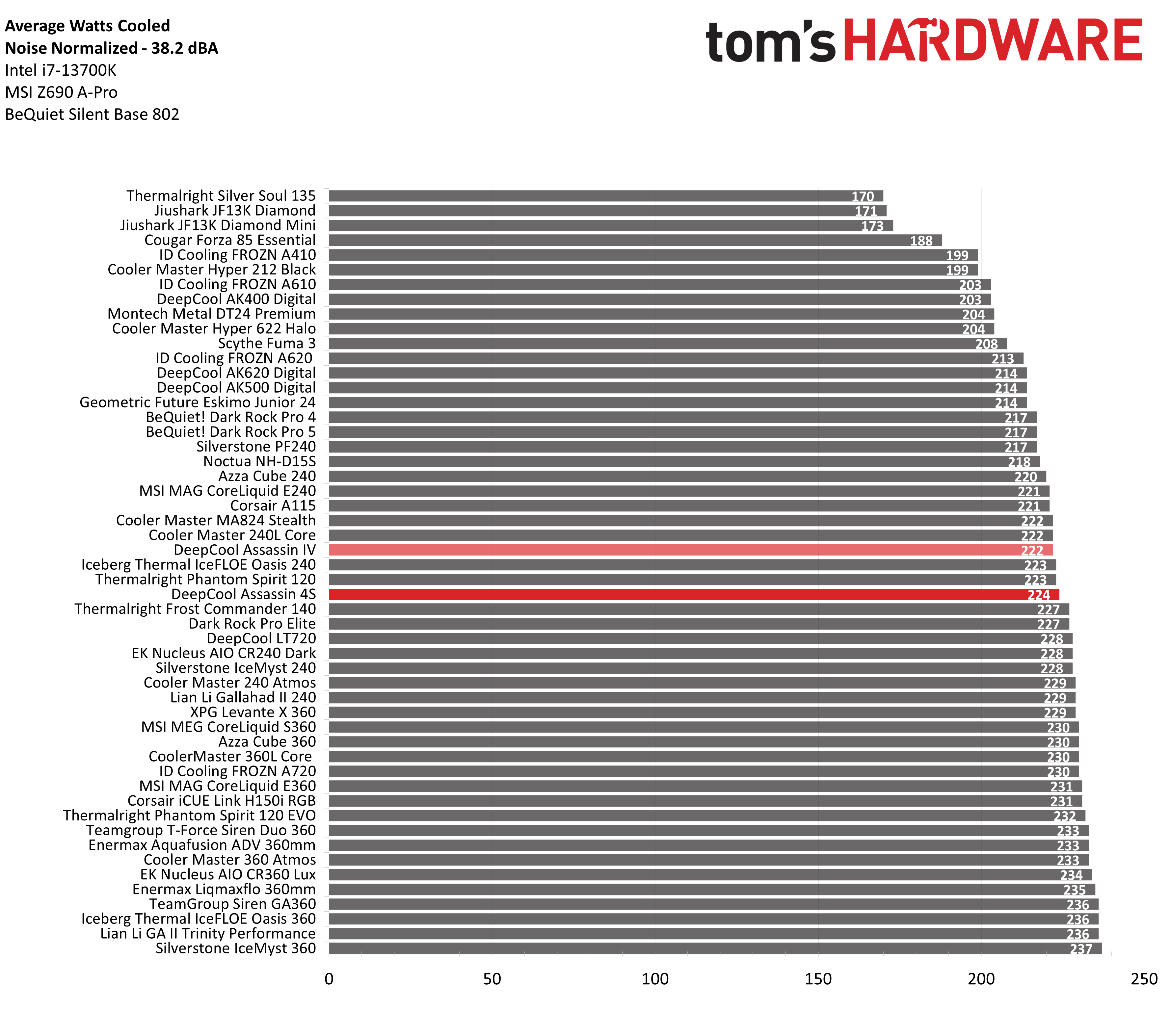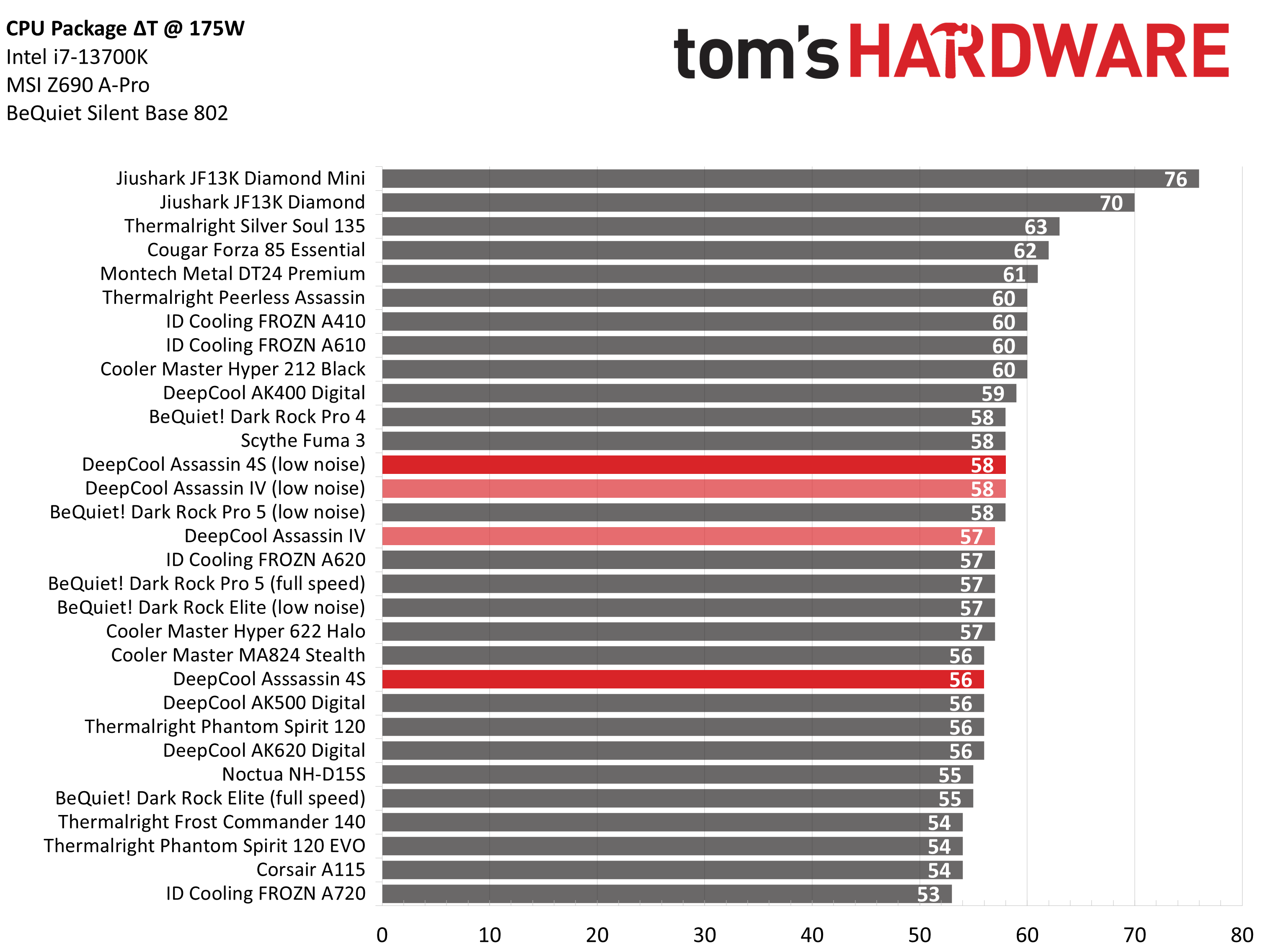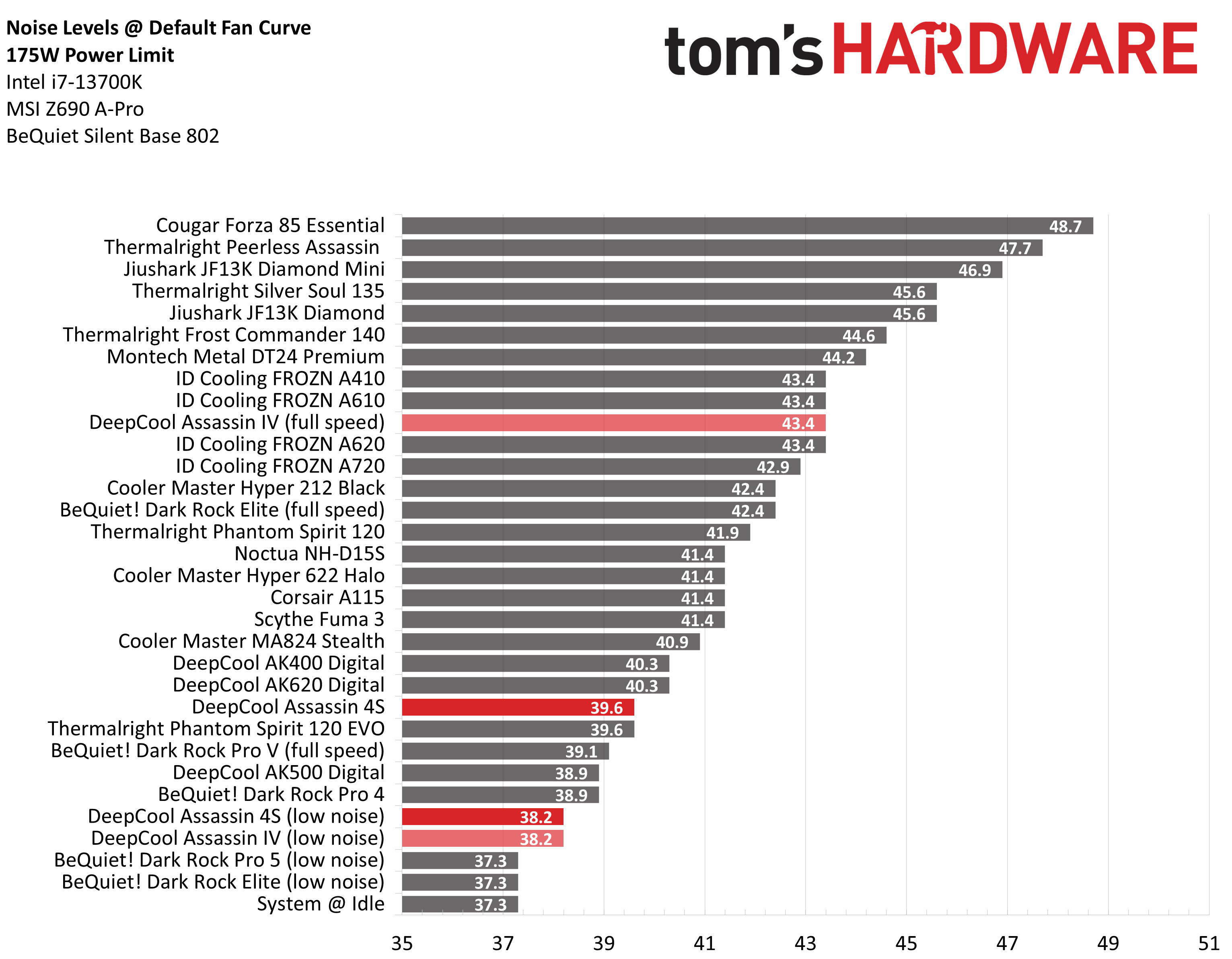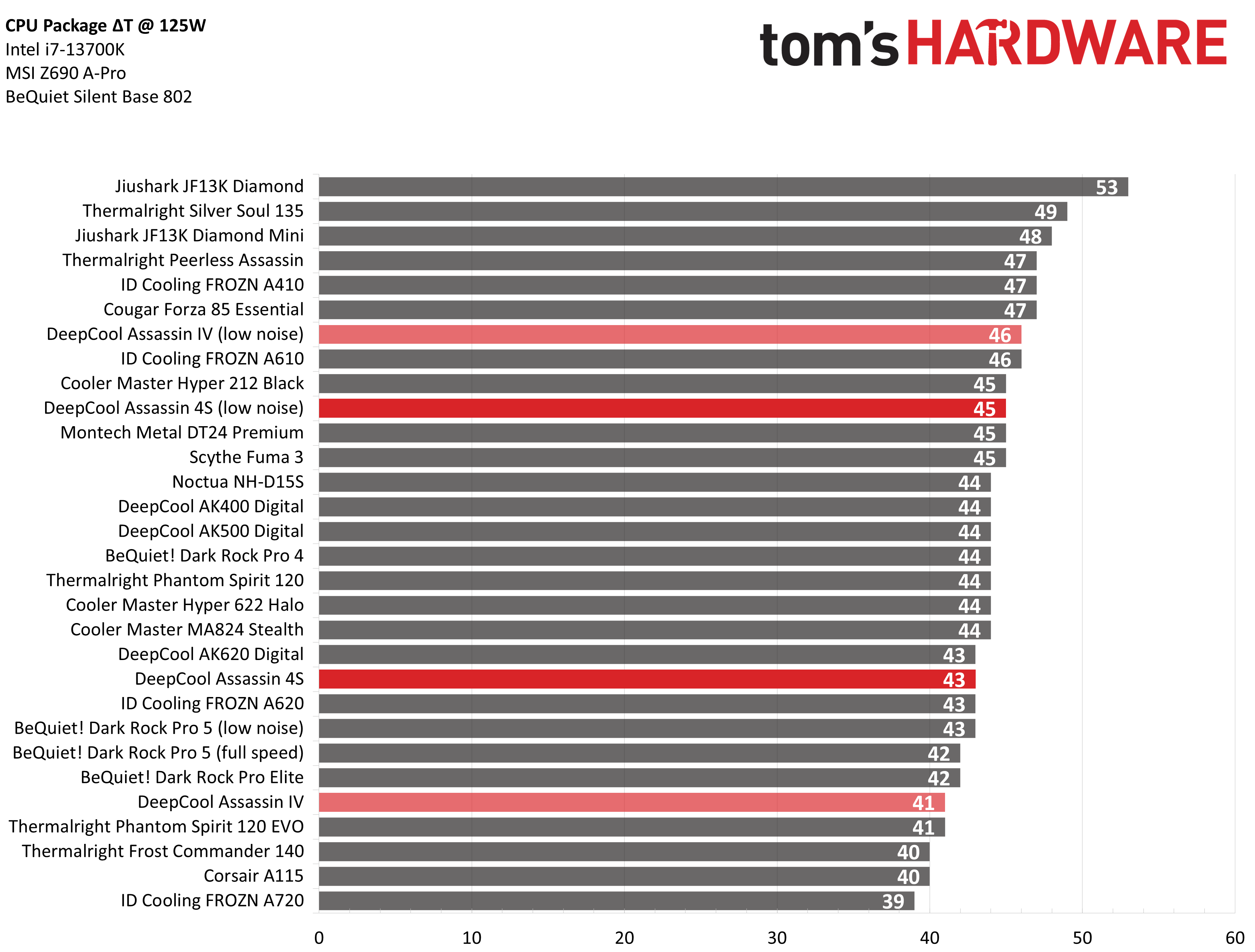Why you can trust Tom's Hardware
Thermal results without power limits
Without power limits enforced on Intel’s i7-13700K, the CPU will hit its peak temperature and thermally throttle with even the strongest of air coolers. When the CPU reaches its peak temperature, I measure the CPU package power to determine the maximum wattage cooled to best compare their performance. The results below do not include the best liquid coolers on the market, which are able to keep the CPU under TJMax (100 degrees Celsius).
The Assassin 4S is nearly as good as the original Assassin IV, trailing it by 3-4W in cooling performance – but it runs more quietly. In its full-speed mode, its sound output is more than 3dBA lower! The low-noise mode doesn’t show a drastic change from the previous cooler, only improving by 0.7 dBA over the low-noise mode tested on the Assassin IV.
Thermal results with noise-normalized to 38.2 dBA
Finding the right balance between fan noise and cooling performance is important. While running fans at full speed can improve cooling capacity to some extent, the benefits are limited and many users prefer a quiet system. With this noise-normalized test, I’ve set noise levels to 38.2 dba. This noise level is a low volume level, but slightly audible to most people.
The Assassin 4S narrowly outperforms its predecessor by two watts when noise normalized, showing the improvements from the upgraded fan design.
175W Cinebench results
Most coolers on the market can keep Intel’s i7-13700K under its peak temperature if the power consumption is limited, so for this test we’ll be looking at the CPU’s actual temperature.
With a steady 175W load run on the CPU, the temperature averaged 56 degrees C over the ambient room temperature of 23 C in full-performance mode and 58 C in low-noise mode. This is another extremely impressive result, tied for the second-best result from any air cooler I’ve tested thus far, and an improvement of 2 C compared to its predecessor.
The 4S’s thermal performance is equal to the original Assassin IV in low-noise mode, and only a single degree behind in full performance mode. This is especially impressive when you consider noise levels – the Assassin 4S runs at only 39.6 dBA, compared to the 43.4 dBA produced by the Assassin IV.
Get Tom's Hardware's best news and in-depth reviews, straight to your inbox.
125W Cinebench results
The lowest power limit I test with Raptor Lake CPUs is 125W. This is a high enough limit to allow the CPU to maintain its base clock speeds even in the most intensive tests, and most coolers should be capable of keeping the CPU below TJ Max (the max temperature before throttling) – even low-end coolers.
Thermals don’t really matter in this scenario. Even Intel’s stock cooler can handle a load like this with ease. Noise levels, rather than CPU temperature, are the important factor here. These were ideal, never overpowering the ambient system noise of 37.3 dBA in both full performance and low noise modes. What this means is that the cooler ran quieter than my system fans.
Conclusion
The Assassin 4S offers a unique, arguably attractive aesthetic unlike any other save those that came before it in the same line. And it delivers quieter noise levels than its predecessor. While it is cheaper than the Assassin IV, its price tag of $79.99 puts it firmly into “premium” territory and makes it hard to recommend for most users.
If it were just a bit cheaper, I’d have an easier time recommending it, and it will likely go on sale at some point, so keep an eye out if you're interested. DeepCool backs the Assassin 4S with an impressive 6-year warranty – twice as long as many competitors – which makes the higher price tag a little bit easier to swallow.

Albert Thomas is a contributor for Tom’s Hardware, primarily covering CPU cooling reviews.
-
MuddyChicken I’m currently trying this cooler and comparing it to the Fuma 3. I powered limited my 13900k for gaming. In your opinion which route would you go? There’s a difference of $30. The assassin 4s sure looks better cosmeticallyReply
